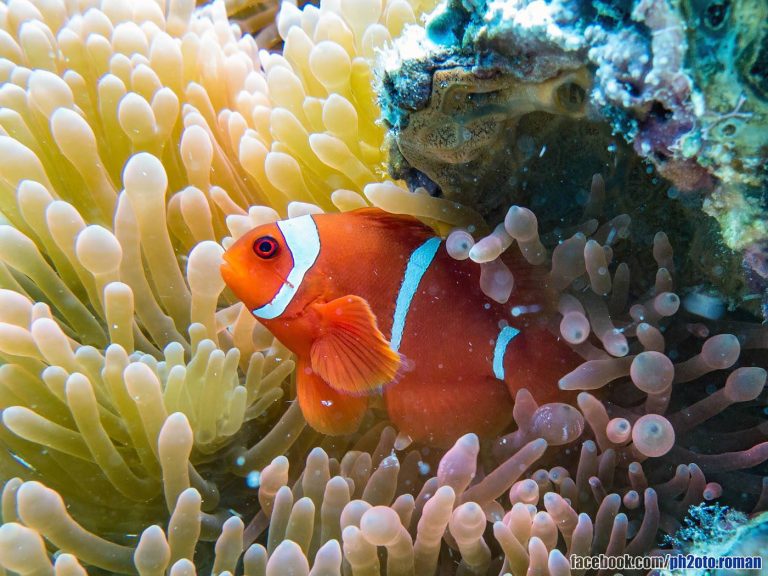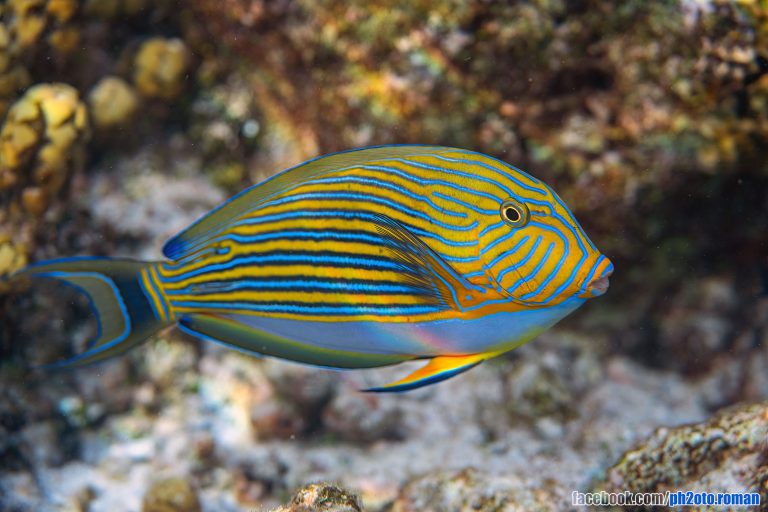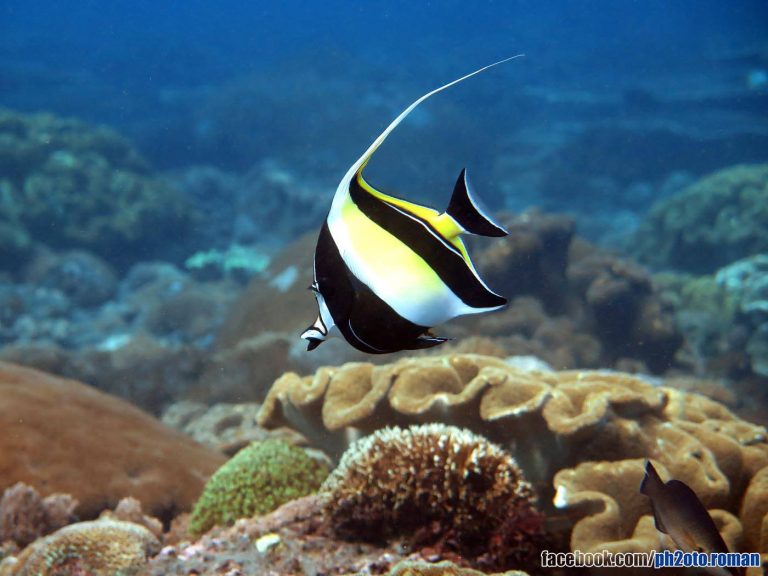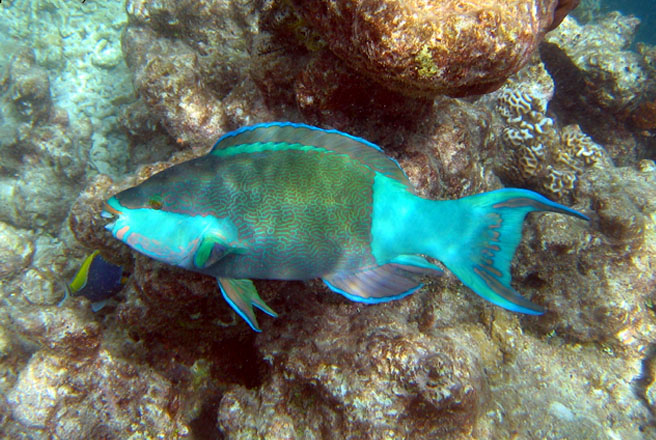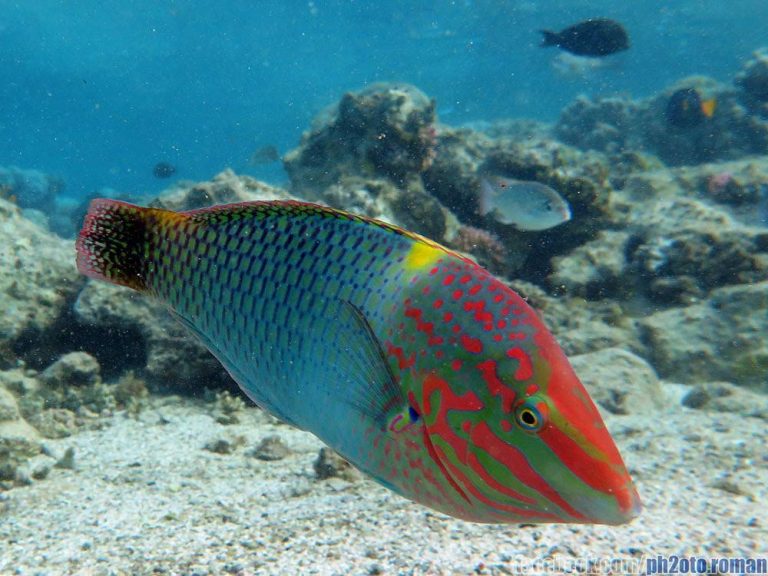The fish that inhabit coral reefs are numerous and diverse.
Coral reef fish are fish who live among or in close relationship with coral reefs. Coral reefs form complex ecosystems with enormous biodiversity. Among the myriad inhabitants, fish stand out as colorful and interesting to watch. Hundreds of species can exist on a small area of healthy reef, many of which are hidden or well camouflaged. Reef fishes have developed many sophisticated specializations adapted to survive on reefs.
Coral reefs occupy less than one percent of the world’s ocean area, yet they provide a home for 25 percent of all marine fish species. Reef habitats are in stark contrast to the open water habitats that make up the other 99 percent of the world’s oceans. However, the loss and degradation of coral reef habitat is increasing pollution, and overfishing, including the use of destructive fishing practices, threaten the survival of coral reefs and associated reef fishes.
Here are some of the most common species of fish that you can meet while snorkeling on the coral reefs off Thoddoo Island
The Clownfish (Amphiprion ocellaris)
is also known as the false percula clownfish, ocellaris clownfish or common clownfish is a marine fish belonging to the family Pomacentridae, which includes clownfishes and damselfishes. Amphiprion ocellaris are found in different colors, depending on where they are located. It has three vertical white stripes outlined with a fine black line. When they initially hatch, they reside near the surface. However, when Amphiprion ocellaris enter into the juvenile stage of life, they travel down to the bottom to find shelter in a host anemone. Once they find their anemone, they form a symbiotic relationship with them. The clownfish are reliant on sea anemone for shelter. Sea anemone are protection for the fish and their nests. It is postulated that the fanning behavior of the fish and removal of parasites promotes the health of sea anemones which contain the clownfish fish. In addition, the anemone provides protection for the fish with its tentacles, however, the fish’s mucus protection prevents it from being stung by the tentacles. The presence of the clownfish can be interpreted as a lure to attract potential anemone’s preys close to the tentacles. And the clownfish can also defend the anemone against some reef fishes which could eat the tentacles. (wikipedia)
The Convict surgeonfish (Acanthurus triostegus)
is also known as the convict tang, convict surgeonfish, or manini occurs in the tropical Indo-Pacific region, East African coast and Madagascar, southwestern Japan, Australia and Central America, including many Pacific island groups. The convict tang is so called because of its bold black stripes on a yellowish background. It is found over hard bottoms in lagoons, reef slopes, bays and estuaries. It is a laterally-compressed oval-shaped fish, typically about 17 cm long, but some individuals may reach 27 cm.
The Lined Surgeonfish (Acanthurus lineatus)
is a member of the family Acanthuridae, the surgeonfishes. Other common names include blue banded surgeonfish, blue-lined surgeonfish, clown surgeonfish, pyjama tang, striped surgeonfish, and zebra surgeonfish. This species reaches about 38 cm in length. Much of the body has black-edged blue and yellow stripes, and the top of the head is striped with yellow. The belly is grayish. The pectoral fins have darkened rays and the pelvic fins are yellow-brown with black margins. The lined surgeonfish is associated with reefs, living in marine waters just a few meters deep. This fish is territorial, with a large male defending a feeding territory and a harem of females. The adults may also school, and they gather en masse during spawning. The juvenile is solitary. The fish is mostly herbivorous, but might eat crustaceans at times. Most of its diet is algae. It grazes during the day.
The Moorish idol (Zanclus cornutus)
is a marine fish species, a common inhabitant of tropical to subtropical reefs and lagoons. The Moorish idol got its name from the “Moors” of Africa, who purportedly believed the fish to be a bringer of happiness. Moorish idols stand out in contrasting bands of black, white and yellow, which makes them attractive to aquarium keepers. (wikipedia)
The Parrotfish (Scarus frenatus)
is a species of parrotfish. Common names include bridled parrotfish, sixband or six-banded parrotfish or vermiculate parrotfish. Its appearance changes during its life phases. Also, males and females differ each other, especially color of the caudal fins.
Normally, the parrotfish occurs at depths of 1–25 m on exposed outer coral reefs, occasionally in extremely shallow water. This species is generally a solitary fish.
The Powder blue surgeonfish (Acanthurus leucosternon)
is a marine tropical fish belonging to the surgeonfish family, Acanthuridae. Its common names are powder blue tang and powder-blue surgeonfish. The species inhabits shallow and clear coastal waters always associated with a coral reef. It is solitary, territorial and aggressive with other surgeonfish. In cases where food is plentiful, it may feed in shoals, but in cases of scarcity, it may compete individually for food. The intensity of its blue color shows off if the fish is healthy or not. The fish does not undergo color changes as it matures; as many other species. (wikipedia)
The Threadfin butterflyfish (Chaetodon auriga)
The threadfin butterflyfish is a species of marine ray-finned fish belonging to the family Chaetodontidae. Chaetodon auriga is up to 23 centimeters (9 in) long. Its body is white with “chevron” markings on the side. The rear edge of the dorsal fin has a prominent black spot with a trailing filament behind it, and a black vertical band runs through the eye. The fish also has a belly patch of descending oblique dark lines and bright yellow fins. (wikipedia)
This species of fish has a number of color variations
The Whitetip reef shark (Triaenodon obesus)
The whitetip reef shark is a small shark that does not usually exceed 1.6 m (5.2 ft) in length. It is one of the most common shark found on Indo-Pacific coral reefs, typically on or near the bottom in clear water, at a depth of 8–40 m. During the day, whitetip reef sharks spend much of their time resting inside caves. At night, whitetip reef sharks emerge to hunt bony fishes, crustaceans, and octopus in groups. Whitetip reef sharks are rarely aggressive towards humans, though they may investigate swimmers closely. However, spear fishers are at risk of being bitten by one attempting to steal their catch. The IUCN has assessed the whitetip reef shark as Vulnerable, noting its numbers are dwindling. (wikipedia)
Among the most abundant sharks inhabiting the tropical coral reefs of the Indian and Pacific Oceans also belongs the blacktip reef shark which can be easily identified by the prominent black tips on its fins (especially on the first dorsal fin and its caudal fin) and differ by this to the whitetip reef shark. Timid and skittish, the blacktip reef shark is difficult to approach and seldom poses a danger to humans unless roused by food. Newborn sharks are found also in shallower water than adults, so people wading through shallow water can meet them.
The Lagoon triggerfish (Rhinecanthus aculeatus)
is also known as the blackbar triggerfish, the Picasso triggerfish, or the Picasso fish and found on coral reefs and sandy areas of coral reefs in the Indo-Pacific region. It grows up to 30 cm in length. They eat just about anything that comes along, mostly including invertebrates and reef algae. They are always restlessly swimming around and vigorously protect their territory against intruders, including divers, especially when guarding their eggs during reproduction season. Their relatively small size makes them much less dangerous than the larger titan triggerfish of the same family. Pair-spawning takes place around sunrise, with the egg masses being attached to sand, coral rubble or algae. They hatch on the same day around sunset.
Mothers in this species guard and care for eggs until they hatch. (wikipedia)
The Clown Triggerfish (Balistoides conspicillum)
is a demersal marine fish belonging to the family Balistidae, or commonly called also „triggerfish”. This fish is widely distributed throughout the tropical and subtropical waters of the Indian Ocean and in the western Pacific Ocean and grows up to 50 cm. It has a diurnal activity, is solitary and defends a territory. It can be very aggressive with other fish and congeners. The first long dorsal spine when is erected, it is used to impress an opponent or to avoid a predator to pull it out of its refuge. Because of its attractive coloration, this fish is one of the most highly prized aquarium fish. (wikipedia)
Indian Ocean oriental sweetlips (Plectorhinchus vittatus),
is a species of marine ray-finned fish also known as the oriental sweetlips or oriental blubberlips. They have fleshy lips which become greatly swollen as the fish ages. The subadult have wide stripes on their head, body and fins while the juveniles have black blotches and spots that are joined but which slowly split into longitudinal stripes as they grow, the pectoral fins of juveniles are black. This species attains a maximum total length of 72 cm. The Indian Ocean oriental sweetlips inhabit shallow, coastal coral reefs, lagoons and seaward reefs at depths of 2 to 25 m. It is found singly or in small aggregations and is tends to be nocturnal. It forages at night feeding on small invertebrates such crustaceans, gastropods or annelids, as well as smaller fish. (wikipedia)
The yellow-brown wrasse (Thalassoma lutescens)
is a species of wrasse native inhabit in the Indian and Pacific Oceans of coral reefs, it occurs in schools at depths from 1 to 30 m. It can reach 30 cm in total length. This species can also be found in the aquarium trade.
The Chinese trumpetfish (Aulostomus chinensis)
is a medium-sized fish which grows up to 80 cm in length. Its body is elongated and compressed laterally, with a long, tubular snout which has a small barbel at its inferior extremity. Caudal fin usually has two round black spots, at least one black spot occurs on the top and sometimes a second spot on the low part. The Chinese trumpetfish is diurnal and solitary, it feeds on small fishes and crustaceans. This species is found in tropical and subtropical waters from the Indian Ocean and the Pacific Ocean, but not in the Red Sea.
You can see many of the coral fish species mentioned in this blog in this video, which was filmed near the island of Thoddoo
Something about the author of the photos published in this post
The photos used in this blog are from the personal archives of Moosa Farooq (owner of the Amazing View guesthouse), Ladka Bartosova (a guest of the Amazing View guesthouse) and Roman Mrazek. One photo was used from Wikipedia (author Ewa Barska).
Roman Mrazek is a photographer of weddings https://www.facebook.com/videoafoto and when he finds the opportunity, he likes to take pictures underwater. On his Facebook page https://www.facebook.com/ph2oto.roman you can find his photos from snorkeling in Egypt, Philippines, Bali, Indonesia, Thailand and also in Maldives. He has also published several wall calendars with his underwater photos.

